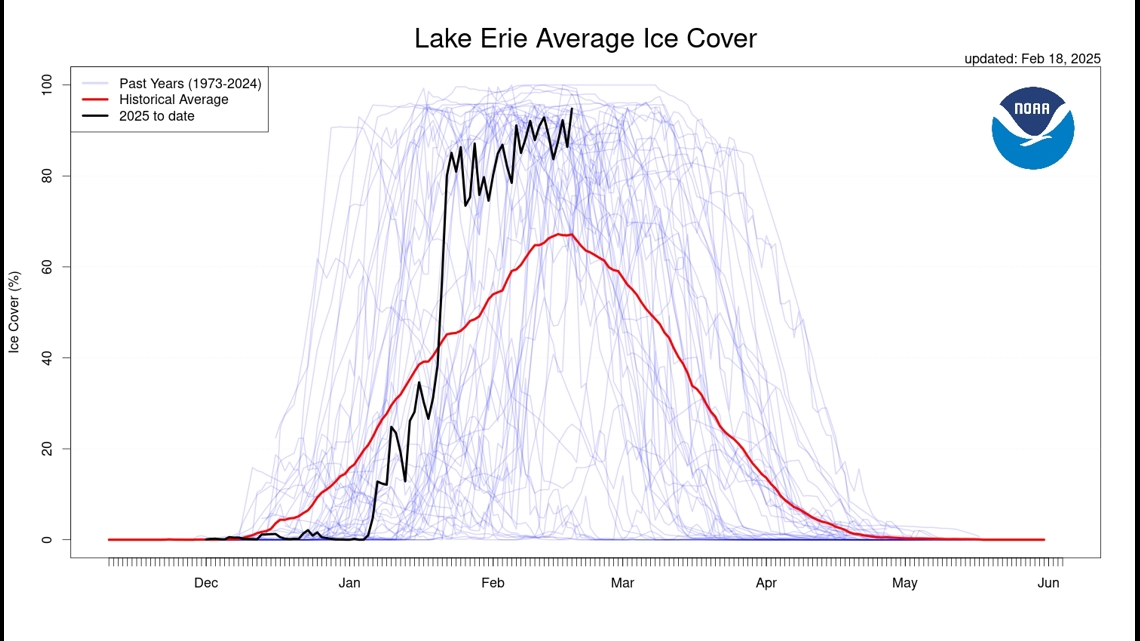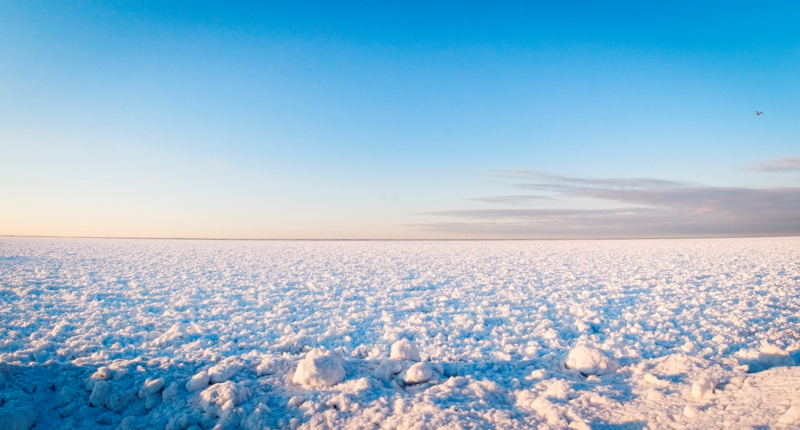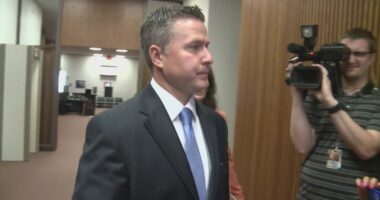After a well below average amount of ice last season (2023-24), this year Lake Erie’s surface is icy.
CLEVELAND — It’s been a real winter here in Northeast Ohio, hasn’t it? Cold air. Proper bouts of snow. And Lake Erie is mostly iced over.
As of Feb. 18, 2025 Lake Erie is 94.78% iced over (scroll down to see a satellite picture of the Lake). This is stark change to ice coverage at this time last season when the Lake had a maximum of 35.7% ice coverage.
As a matter of fact, this is the most ice coverage the Lake has had since 2018 when 95.1% of the Lake was iced over.
It’s a rarity that Lake Erie totally ices over. Wind is a major fact, as it keeps the ice moving and “chopped up” so to speak.
At the same time, we’ve never had a season with zero ice.


Here is the historical record of ice cover on Lake Erie, courtesy of NOAA’s Great Lakes Environmental Research Lab (GLERL):
1973 95.7
1974 88.5
1975 80.1
1976 95.4
1977 99.8
1978 100.0
1979 100.0
1980 93.4
1981 96.0
1982 99.1
1983 40.8
1984 95.7
1985 96.0
1986 95.5
1987 88.0
1988 91.5
1989 91.6
1990 72.8
1991 35.1
1992 89.8
1993 94.3
1994 96.7
1995 94.0
1996 100.0
1997 99.6
1998 5.4
1999 74.8
2000 90.7
2001 94.0
2002 14.4
2003 95.7
2004 95.4
2005 93.0
2006 21.9
2007 95.8
2008 93.4
2009 95.5
2010 93.1
2011 95.8
2012 13.9
2013 83.7
2014 96.1
2015 98.1
2016 78.7
2017 35.5
2018 95.1
2019 94.3
2020 15.9
2021 85.7
2022 93.8
2023 40.2
2024 35.7
Ice cover on Lake Erie is kind of a big deal. It plays a key role in keeping the lake’s ecosystem in balance. It affects everything from water temperature and fish populations to regional weather. According to research from the NOAA and studies in the Journal of Great Lakes Research, ice acts like a natural blanket, helping to reduce evaporation and maintain water levels — both essential for aquatic life and human use.
Scientists at the GLERL also point out that ice cover helps regulate water temperatures, preventing drastic swings that could disrupt fish spawning, especially for species like or coveted walleye and yellow perch. Plus, it helps protect the shoreline by buffering waves, reducing erosion — a benefit documented by the International Association for Great Lakes Research (IAGLR).
Climate impacts could mean ice cover is shrinking, and that has consequences. A study in Nature Climate Change warns that less ice could mean stronger lake-effect snowstorms in nearby regions. With ice cover declining, scientists stress the need to keep a close eye on these changes to better protect Lake Erie’s ecosystem and the communities that depend on it.



















